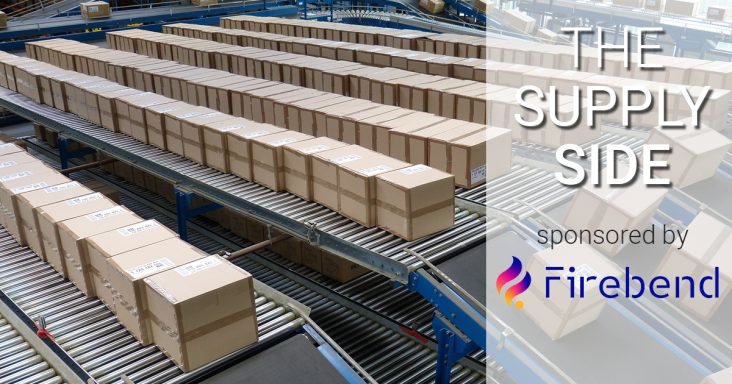The Supply Side: More retailers rethink self-check options
by May 13, 2024 10:16 am 1,051 views

Self-checkout is nothing new in retail. It first appeared more than three decades ago in Kroger and is now in more than 95% of retailers, according to the Food Industry Association.
Walmart aggressively invested in self-checkout technology in 2013. With more sophisticated camera technology in the scanners, Walmart added around 10,000 newer systems in about 2,500 of the retail giant’s more than 4,000 stores. Walmart said then that customers wanted a choice, and the self-check option would allow shoppers to move through the line quickly during busy store hours.
The improved, innovative technology could distinguish color and other product attributes to reduce erroneous pricing. For instance, the machines could distinguish between a yellow onion and the more expensive red onion. Walmart has gone so far in the Neighborhood Market grocery stores that self-checkout has replaced all but one staffed line. Supercenters went to large self-service corrals at each end of the store manned by one or two sales cashiers to help with flow, price overrides and authorization for adult-only products.
However, over the past year, Walmart has dialed back the self-checkout lanes and added more lines staffed with employees. Walmart also created express lanes for its Walmart+ subscribers who shop with the Scan and Go feature in the Walmart app while in the store. Walmart recently removed all self-checkout lanes in some stores except for Walmart+ members — who pay $12.95 per month or $98 per year — and Spark Drivers who pick up and deliver online orders.
“From time to time, our stores adjust the use of staffed checkouts and self-checkouts,” Walmart noted in a response about the recent changes. “For example, a store might start or end the day with staffed checkouts. As the number of shoppers and associate staffing increases, these stores open self-checkout registers to manage the increased customer flow. This process isn’t new. During these times of limited access, some stores are designating select self-checkout stations for Walmart+ customers using our Scan and Go service and Spark drivers for quicker access and delivery services. This decision is intended to better manage checkout availability.”
Walmart is not alone in reducing self-service checkout lanes. In February, Target limited the hours during which its self-check lanes could be used, possibly in an attempt to reduce theft. Target has also invested in self-check technology over the past decades, adding more unstaffed lanes. But last year, Target began to limit self-checkout to customers with 10 or fewer items. Target management said the item limit was needed to reduce wait times and better understand guest preferences.
Target CEO Brian Cornell has been outspoken about store theft, which hurt margins in 2023. However, the retailer did not confirm that the theft was related to the reduced self-check availability in stores. Instead, Target said customers enjoy using the manned checkout lines, and the self-checkout lines are there to help with overload during busier store hours.
A report from asset protection firm FMI found that 60% of grocery transactions still go through manned cashier lines, 30% go through self-check and 10% use express lanes.
Raydiant runs a platform that furnishes and manages kiosk content, including self-check. Raydiant surveyed retail customers over the past three years and found that consumer usage has increased and attitudes have evolved. Survey data revealed that 85% of consumers believe self-check is faster than an employee-staffed lane. Also, 60% said they prefer self-checkouts over lanes staffed with employees. The popularity comes even as 67% said the self-service kiosk had failed them at least once. Still, 25% said a bad experience is why they no longer use self-service kiosks.
Walmart saw consumer pushback when self-service kiosks were the only option in large stores like Supercenters. Walmart posted employees at the doors to check receipts, which angered some consumers. Walmart has since stopped that practice after adding back more staffed check-out lanes in its stores in addition to self-check options.
Retailers initially reduced costs by 66% using self-checkout, but with the explosion of online grocery shopping, more employees are needed to pick customer orders. Walmart has said that when fewer manned checkouts are open, those employees help customers through self-checkout and elsewhere in the store.
Deep discounters like Aldi have added self-check options in their grocery stores, but still give shoppers the choice of a staffed lane.
Dollar General, also sparsely staffed, added self-check kiosks to help customers move more quickly through the checkout process last year. However, on March 18, Dollar General CEO Todd Vasos announced that self-check kiosks would be removed from hundreds of locations with the highest amount of shoplifting and product losses. Vasos said self-checkout has been available in more than 14,000 stores, but around 9,000 locations will be converted back to “assisted checkout” in the coming months.
“This is intended to drive traffic first to our staffed registers, with assisted checkout options available as second or third options to reduce lines during high volume times,” Vasos said.
He said the company will remove self-checkout at 300 stores by the end of the year and limit self-checkout purchases to five items or less in the remaining 4,500 Dollar General stores.
“Collectively, we believe these steps are in line with where the customer wants us to be, which includes increasing personal engagement with them at the store,” Vasos said.
Editor’s note: The Supply Side section of Talk Business & Politics focuses on the companies, organizations, issues and individuals engaged in providing products and services to retailers. The Supply Side is managed by Talk Business & Politics and sponsored by Firebend.
